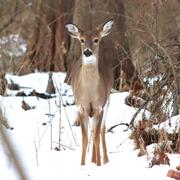Species Status Assessments
The USGS Fisheries Program develops valuable tools for assessing species’ vulnerability to environmental stressors, focusing on 3 critical elements: exposure (magnitude of change), sensitivity (likelihood of adverse impacts), and adaptive capacity (species’ ability to cope with change).













